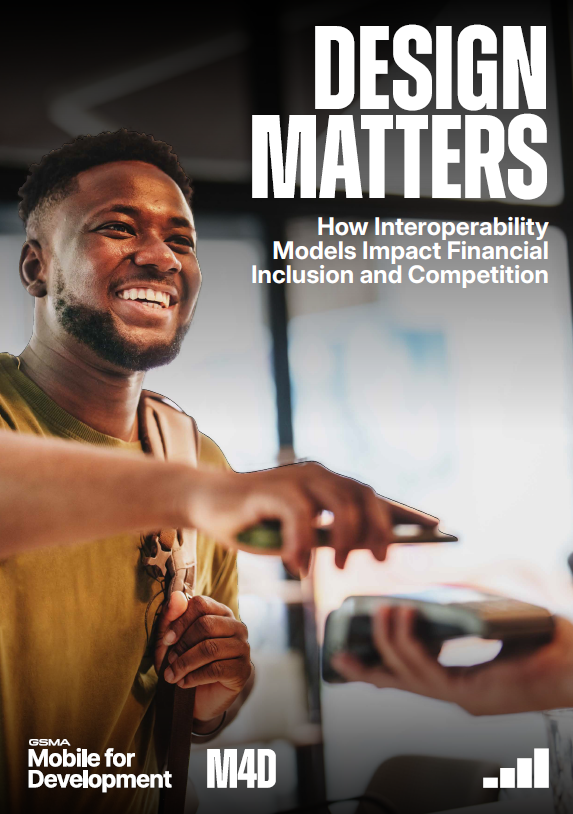Design matters: how interoperability models impact financial inclusion and competition

Please complete the form below or register for a free public account to access this report.
Report details
Design matters: how interoperability models impact financial inclusion and competition
This report evaluates the impact of mobile money interoperability on adoption, usage and competition. With interoperability now present in more than 90 markets, the study moves beyond binary classifications to assess how different policy models – market-led, regulator-led and voluntary – affect outcomes. Using robust econometric techniques and multi-country panel data, the report finds that interoperability significantly boosts adoption, especially when introduced after markets reach maturity. Market-led models consistently outperform other models, delivering gains in adoption and reducing market concentration without harming usage. A headline finding is that if countries had implemented market-led interoperability when the market was sufficiently mature, there could have been an additional 30–70 million active 90-day accounts of mobile money in 2023. Timing and policy design are also critical: early or rigid mandates can reduce transaction values and discourage adoption. The report provides actionable insights for policymakers and industry leaders seeking to expand financial inclusion through sustainable interoperability strategies.
Download the Report
Complete the form below to get instant access to this report. For easier access in the future, you can register for a free account here.
Report details
Design matters: how interoperability models impact financial inclusion and competition
Related research
Promoting DFS adoption among underserved market segments
This report explores how digital financial services (DFS) are reshaping access to finance in low- and middle-income countries, particularly for underserved individuals and nano, micro and small enterprises. Despite significant progress – driven by innovations such as mobile money – 1.4 billion people remain unbanked, with women, rural communities and less educated groups most affected.
The State of Mobile Internet Connectivity 2025: Affordability of Internet-Enabled Handsets and Data
The final report in this series explores how affordability of entry-level, internet-enabled handsets and various data bundles have changed over time, and how affordability impacts different segments of the population.
Digital Nations 2025: Towards digital sovereignty in India
In India, government initiatives and policy objectives reflect the country's increasing focus on digital sovereignty, with an emphasis on self-reliance in digital technologies. These build on the progress made by Digital India and prioritise the development of digital technologies for social and economic growth.
Authors
How to access this report
Annual subscription: Subscribe to our research modules for comprehensive access to more than 200 reports per year.
Enquire about subscriptionContact our research team
Get in touch with us to find out more about our research topics and analysis.
Contact our research teamMedia
To cite our research, please see our citation policy in our Terms of Use, or contact our Media team for more information.
Learn moreRelated research
Promoting DFS adoption among underserved market segments
This report explores how digital financial services (DFS) are reshaping access to finance in low- and middle-income countries, particularly for underserved individuals and nano, micro and small enterprises. Despite significant progress – driven by innovations such as mobile money – 1.4 billion people remain unbanked, with women, rural communities and less educated groups most affected.
The State of Mobile Internet Connectivity 2025: Affordability of Internet-Enabled Handsets and Data
The final report in this series explores how affordability of entry-level, internet-enabled handsets and various data bundles have changed over time, and how affordability impacts different segments of the population.
Digital Nations 2025: Towards digital sovereignty in India
In India, government initiatives and policy objectives reflect the country's increasing focus on digital sovereignty, with an emphasis on self-reliance in digital technologies. These build on the progress made by Digital India and prioritise the development of digital technologies for social and economic growth.
- 200 reports a year
- 50 million data points
- Over 350 metrics
